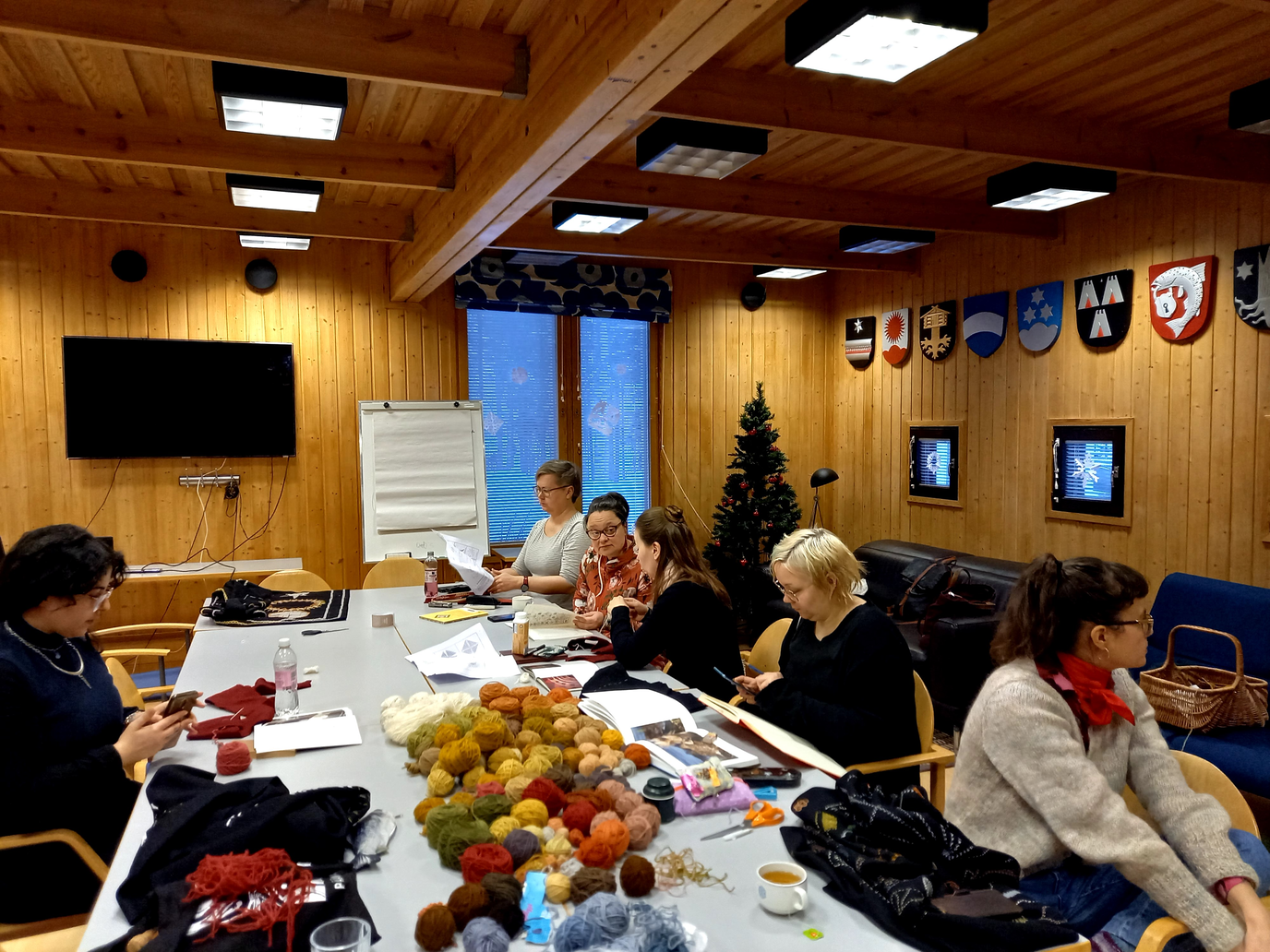Figures 8-9. Pictures taken at one of the Embroidered Stances session and depicting the range of shades and tones that the group has been able to obtain using a variety of local plants, mushrooms and insects. Photograhs by Cervantes, 2022.
I associate yarn with memories of my childhood. I remember sitting in my aunt’s living room, with my mother, grandmother and other women of my family knitting. They were always discussing yarn colors, patterns, knit stitches, and local yarn shops where they got the best yarns in town. I remember all this, in an atmosphere of coffee smell on an autumn afternoon. If I think about those memories, I can hear my mother’s laughs and vague stories and anecdotes about my family. I associate yarn as a family memory that nowadays resonates and feels familiar again through our shared artistic project, Embroidered Stances. I am aware of the power of this particular material to spark a community, but it is only now that I realise how yarn can also become a love language. (Cervantes, research diary)
Craft is a field of practice that embraces intergenerational connectedness and learning from parents and grandparents (Groeneveld, 2010; Turney, 2009), as also noted in Cervantes’ testimonies in her diary. Even during the era of industrialisation and mass production, crafting traditions continued (Adamson, 2010). Recently, craft making boomed in Finland due to the Covid pandemic (Taitoliitto, 2021). The use of wool yarn flourished when society closed and gatherings were denied.
According to linguistic and archaeological evidence, wool has been used in Finland for over 2000 years (Maijala, 1988), and Embroidered Stances celebrates wool, ancestral craft traditions and intergenerational continuity of traditions in the same way as Cervantes experienced in her childhood when family members were knitting wool at her home in Mexico. The tradition of blanket embroidery began in Finland in the late 1700s (Grönlund, 1985) and according to Grönlund (1985), embroidered blankets were heirlooms and valuables that were used as wall hangings, covers for sleds, bedspreads, tablecloths and clothes for the dead. Traditionally, the fabric was usually black wool; a variety of stitches to delineate and fill in the patterns were used in embroidery and the yarn used was made of sheep wool, the shades were obtained by dyeing he wool with plants and mushrooms (Grönlund, 1985).
In the Embroidered Stances project, wool is a material that supports and enhances the dialogue between tradition and innovation in the same way as noted by Jokela et al. (2020).
Another aspect related to the recent boom in crafts is the fact that today’s designers are losing connections with their materials and techniques. As craft transmits the knowledge, traditions and values of different cultures around the world, it can play an important role in preserving collective memory.
A culture’s soul can be seen through its craft. Even though heritage is priceless, there is also an opportunity to continue and revive its importance by connecting, co-designing and collaborating with designers.


